2015-10-14
Silver Spring Networks announced it has been selected to deliver an intelligent LED street lights network in Halifax, Nova Scotia, Canada. Silver Spring Networks will be deploying its award-winning smart street lights solution, including its Streetlight.Vision control software, to network 43,000 LED luminaires provided by LED Roadway Lighting, a manufacturer of smart lighting systems. Halifax is the capital city of Nova Scotia and, with more than 400,000 residents and geographic area covering almost 2,500 square miles, is the largest municipal area in Canada’s maritime province region.
Continue reading →
 2015-10-14
2015-10-14
When Sandia National Laboratories electronics engineer Chris Carlen got enthusiastic about flashlights containing high-power light-emitting devices (LEDs), he didn’t expect his hobby to lead to the creation of a new, high-speed LED driver that delivers lighting performance that exceeds that of conventional sources at a fraction of the cost.
Continue reading →
 2015-10-14
2015-10-14
As a part of the restaurant chain's continued commitment to making its restaurants and operations more socially responsible, the SUBWAY® brand has made LED lighting standard for all new and remodeled restaurants. This important upgrade will provide energy-efficient lighting that, in 2014 with a small percentage of stores participating, saved 21.9 million kilowatt hours – enough energy to power 1,996 households in a single year.
Continue reading →
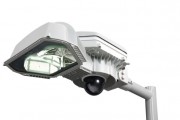 2015-10-13
2015-10-13
Round Rock, a city in Texas, U.S., is one of the first cities to conduct smart LED streetlight tests, according to Round Rock Patch’s report.
Continue reading →
 2015-10-13
2015-10-13
The U.S. Department of Agriculture (USDA) and the National Institute of Food and Agriculture (NIFA) have awarded US $1.7 million to study the novel use of light to suppress a broad group of plant pathogens affecting sustainable production of organically grown crops.
Continue reading →
 2015-10-12
2015-10-12
Low market demands in the past few months has driven Taiwanese LED manufacturer Harvatek to explore innovative LED technologies including forming a partnership that includes teaming up with Taiwan Textile Research Institute (TTRI) to develop LED thread and related technology applications
Continue reading →
2015-10-12
Ayla Networks, whose agile Internet of Things (IoT) platform provides comprehensive connectivity for any kind of product, announced that it has signed its first customer in Europe, Innr Lighting B.V. from the Netherlands. Innr is using the Ayla IoT platform, including Ayla’s Agile Mobile Application Platform (AMAP) technology, to scale its smart home lighting solution across Europe.
Continue reading →
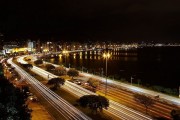 2015-10-12
2015-10-12
GE announced recently the creation of Current, a startup that combines energy hardware with a digital backbone to make power simpler and more efficient for customers.
Continue reading →
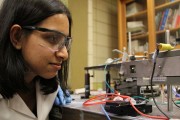 2015-10-12
2015-10-12
The U.S. Department of Energy’s Ames Laboratory has developed a near ultra-violet and all-organic light emitting diode (OLED) that can be used as an on-chip photosensor.
Continue reading →
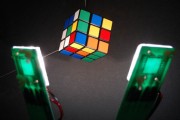 2015-10-12
2015-10-12
Despite technological leaps in modern electronics, the quality of lighting they provide still leaves much room for improvement.
Continue reading →
 2015-10-08
2015-10-08
GE announced Current, powered by GE, a first-of-its kind energy company that integrates GE’s LED, Solar, Energy Storage and Electric Vehicle businesses with its industrial strength Predix platform to identify and deliver the most cost effective, efficient energy solutions required by customers today and in the future. Maryrose Sylvester, who as President and CEO at GE Lighting has led the transformation of one of the company’s most iconic businesses, will lead the new enterprise. Current is backed by GE’s balance sheet and financing expertise, and committed to successfully advancing ecomagination-certified technology solutions, new business models and Predix solutions for the energy sector.
Continue reading →
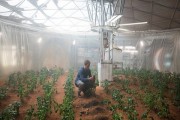 2015-10-02
2015-10-02
Stranded on the barren red planet Mars with few supplies available, astronaut Mark Watney played by Hollywood actor Matt Damon in The Martian is fighting for survival on the harsh planet.
Continue reading →
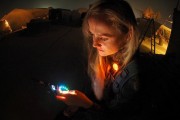 2015-10-02
2015-10-02
This LED badge launched at Burning Man this year has an OLED touch screen was designed by applying reproductive science and genetics. The personified light badges “inherit” a particular lighting sequence that can be passed on to another light badge through intercourse, which takes form through blinking lights. However, all sex between the lighting badges is consensual and require the approval of the female badges (yes the badges have different genders). Badges can also engage in homosexual relations. Instead of a walkie talkie users can use the light badge to link up with friends and choose their mate. For further info on the design concept and technology involved please see below.
Continue reading →
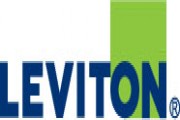 2015-10-02
2015-10-02
Leviton recently announced the expansion of its portfolio of LED lighting fixtures with a new line of industrial grade fixtures designed specifically for use in general industrial and hazardous classified locations. These products are designed to provide lighting for areas where water, vibration, maintenance or temperature can negatively affect conventional lighting fixtures. The product category includes a comprehensive collection of area floodlights, linear fixtures and spotlights.
Continue reading →
 2015-10-01
2015-10-01
Cities and their emergency responders will soon have a new way to deploy gunshot detection technology and be able to respond to incidents and react faster to protect their residents. A memorandum of understanding (MOU) between GE Lighting and SST, Inc., developer of the ShotSpotter™ crime detection and location suite, lays ground to embedding sophisticated ShotSpotter technology into GE’s intelligent LED street lights.
Continue reading →
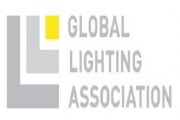 2015-10-01
2015-10-01
The Global Lighting Association (GLA) cautions against the establishment of regulatory or other minimum performance requirements for a colour rendering index (Ra) of greater than 80 for indoor lighting applications. For Europe, the GLA supports retention of legal minimum requirements on colour rendering (Ra) at the current level as defined in the EU Eco-design Regulations (EC 244/2009, EC 245/2009, EC 1194/2012). In the United States, the GLA supports the Environmental Protection Agency’s Energy Star Program’s current minimum requirement of 80 CRI.
Continue reading →
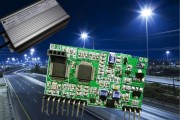 2015-09-25
2015-09-25
gridComm, a provider of power line communication (PLC) solutions that enable the transformation of traditional power grid into a smart grid, announced it has signed a partnership agreement with a leading LED manufacturer in Indonesia, PT Siklon Energy Nusantara, to jointly provide a cloud-based Street Light Management Solution to the Indonesian market. Given Siklon's leadership and expertise in LED lighting and advanced production facilities, the partnership enables the delivery of a complete Intelligent Street Light Solution tailored for Indonesia.
Continue reading →
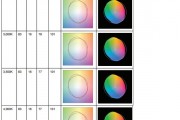 2015-09-24
2015-09-24
Xicato®, a leading manufacturer of intelligent light sources, published today on its website TM-30-15 Color Rendering results for its entire product range of XTM and XIM modules.
Continue reading →
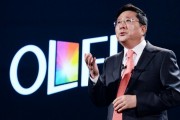 2015-09-22
2015-09-22
Several Chinese TV manufacturers and electronic suppliers have joined South Korea’s LG Display and LG Electronics to form an OLED display technology alliance on Sept. 16, 2015, reported Want China Times recently.
Continue reading →
2015-09-18
The year of 2015 will be the turning point for color television technology, said Houjian Zhou, chairman of Hisense Technology on Sep. 15, 2015 at a press conference.
According to Zhou, electrical technology has its own life cycle and LED industry growth has slowed down. The position and strategy of LED manufacturers today will determine their market position and development five years later. Mainstream Liquid Crystal Display (LCD) technology has evolved for more than 50 years, but did not see any real technology breakthroughs until 2000. Although, liquid crystal display technology became an absolute mainstream display solution, it has seen few innovations within the past two years, which led to price cuts and low profits. Meanwhile, manufacturers have developed OLED display technology for TVs for more than 10 years, yet OLED remains an unmarketable mainstream display technology.
Continue reading →
 2015-09-17
2015-09-17
Jules Verne said in Around the World in 80 Days: “Anything one man can imagine, other men can make real.” Today, that is truer than ever before. Did you ever think it would be possible to communicate so easily with anyone around the world? Surely not. With what we already know about technology and with what we can imagine, there are limitless possibilities for smart cities and for the marketplace of tomorrow. And while the ideas may seem like a sci-fi fantasy now, the current rate of progress means we’re already on the brink of a totally unexpected future.
Continue reading →
 2015-09-17
2015-09-17
The new Chevrolet Camaro is being unveiled for the first time in Europe at the International Motor Show (IAA) in Frankfurt am Main, Germany. HELLA is providing a new kind of interior light concept for the iconic performance car, giving the interior a distinctive design. The color changes slowly throughout the vehicle in a subtle, flowing pattern from the center screen.
Continue reading →
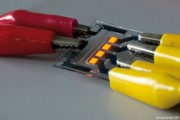 2015-09-15
2015-09-15
The Fraunhofer Institute for Organic Electronics, Electron Beam and Plasma Technology FEP will show for the first time organic light emitting diodes (OLEDs) on graphene at Plastic Electronics 2015 (6th − 8th of October 2015, fair area Dresden, booth 1549, joint booth of OES – Organic Electronic Saxony). These OLEDs are an interim result from the project GLADIATOR funded by the European Commission.
Continue reading →
 2015-09-11
2015-09-11
The specs on iPhone 6s were not far off from early predictions in the industry, such as Apple will be redesigning the phone to meet selfie enthusiasts’ demands, reported Chinese-language media TechNews.
Continue reading →
 2015-09-10
2015-09-10
World leading UV LED solution company, Seoul Viosys(CEO Jaejo Kim, www.seoulvisys.com) and leading U.S. based short-wavelength UV LED pioneer and manufacturer Sensor Electronics Technology Inc (CEO Emmanuel Lakios, www.s-et.com) signed an agreement for joint-commercialize and expand related sales of the Violeds technology which was reported used by NASA aboard the International Space Station.
Continue reading →
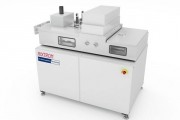 2015-09-10
2015-09-10
AIXTRON, a worldwide leading provider of deposition equipment to the semiconductor industry, has sold the first OPTACAP™-200 encapsulation tool to a major Asian display manufacturer. The standalone R&D system that handles substrate sizes of 200 mm x 200 mm was ordered in the third quarter 2015 and is scheduled for delivery in the first quarter 2016.
Continue reading →
2015-09-10
ON World’s recently published report covers the global market for residential wireless lighting controls based on input from over 2,100 individuals including consumers, smart home service providers, vendors, suppliers, retail outlets and professional installers.
Continue reading →
2015-09-09
The Indian government should make manufacturing standards for LED lights applied in Prakash Path Yojana (PPY) mandatory, The Economics Times cited a Philips spokesperson saying.
Continue reading →
 2015-09-09
2015-09-09
U.S. designer Zac Posen showcased his Zac by Zac Posen diffusion line at an auditorium at Industria Superstudio, which was the first major show to kick off New York Fashion Week, reported Mashable.
Continue reading →
 2015-09-08
2015-09-08
New research may help explain why drug treatments for addiction and depression don’t work for some patients.
Continue reading →
 2015-10-14
2015-10-14
 2015-10-14
2015-10-14
 2015-10-13
2015-10-13
 2015-10-13
2015-10-13
 2015-10-12
2015-10-12
 2015-10-12
2015-10-12
 2015-10-12
2015-10-12
 2015-10-12
2015-10-12
 2015-10-08
2015-10-08
 2015-10-02
2015-10-02
 2015-10-02
2015-10-02
 2015-10-02
2015-10-02
 2015-10-01
2015-10-01
 2015-10-01
2015-10-01
 2015-09-25
2015-09-25
 2015-09-24
2015-09-24
 2015-09-22
2015-09-22
 2015-09-17
2015-09-17
 2015-09-17
2015-09-17
 2015-09-15
2015-09-15
 2015-09-11
2015-09-11
 2015-09-10
2015-09-10
 2015-09-10
2015-09-10
 2015-09-09
2015-09-09
 2015-09-08
2015-09-08